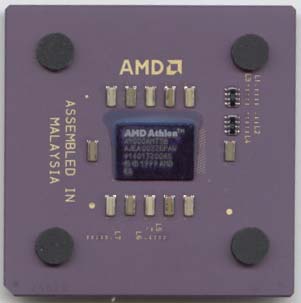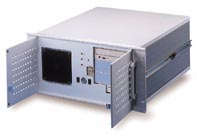Behind AnandTech - The Search for the Perfect Servers
by Anand Lal Shimpi on August 23, 2000 12:00 PM EST- Posted in
- IT Computing
It was a risk, but we went for it. The first job was picking a motherboard. At the time, neither the ASUS A7V nor the ABIT KT7-RAID were widely available, but another board that left us with a very good impression was Microstar's K7T Pro, and it was readily available to us. After picking a motherboard, we contacted Corsair & Mushkin to have a total of 15 256MB modules built that would work properly in a KT133 based motherboard.
As far as CPUs went, the Athlons with the best price/performance ratio at the time were the Thunderbird 800s as they sold for noticeably less than the 850MHz parts, so if you're interested in setting up a similar system, something around the 800 - 850MHz range would be ideal from a price/performance ratio perspective. Keep in mind that this was before the most recent price drop however.

The servers we ended up putting together made use of 1GHz Thunderbirds from AMD, and as we originally hypothesized, one of these servers should be able to offer performance greater than one of our older dual Pentium III Xeon 500 boxes.
We put together a total of 5 new servers, this was in our most recent trip to Pittsburgh (we are hosted at a datacenter there) that many of you caught wind of from our front page post. Each of the servers was configured identically, and all were to be used as Web Servers, with the exception of the fifth server which would act as a mail/stats/admin box for AnandTech but would also work as a Web Server should the need arise.
Since these servers would be running alongside our current web boxes we saw no need to have even more data redundancy and ditched the idea of setting up RAID 1 arrays on each one of these boxes. In fact, since the disk usage on our previous web boxes was so low, we decided to forgo SCSI all together and simply used some 20GB Ultra ATA/66 drives in these new servers. There is very little disk access required by our web servers and there was really no reason to have 5 more RAID 1 arrays of Ultra2 SCSI drives if we weren't going to use the added performance those drives would offer.
 With
that said and done, AnandTech is currently running off of a total of 9 servers,
two of which are dedicated solely to keeping our wonderful Forums readers running
quickly and happily, one being our stats/mail/admin box, and the remaining 6
running AnandTech (1 acting as a Database box). And with this many servers,
they were definitely all placed in Rackmount cases, 5U cases for the Xeon servers
and 4U cases for most of the rest. Mushkin
was the supplier we turned to for our rackmount cases, and they actually offered
pretty good rackmounts for a company that specializes primarily in memory. The
units have been housing and cooling these 9 servers perfectly thus far, and
we haven't had any complaints at all.
With
that said and done, AnandTech is currently running off of a total of 9 servers,
two of which are dedicated solely to keeping our wonderful Forums readers running
quickly and happily, one being our stats/mail/admin box, and the remaining 6
running AnandTech (1 acting as a Database box). And with this many servers,
they were definitely all placed in Rackmount cases, 5U cases for the Xeon servers
and 4U cases for most of the rest. Mushkin
was the supplier we turned to for our rackmount cases, and they actually offered
pretty good rackmounts for a company that specializes primarily in memory. The
units have been housing and cooling these 9 servers perfectly thus far, and
we haven't had any complaints at all.











0 Comments
View All Comments